Un aperçu de la piste DeSPIN et une revue des projets potentiels
La vitesse d'itération de l'Intelligence Artificielle (IA) est au-delà de l'imagination. De l'IA basée sur la perception précoce qui ne pouvait comprendre que des images et du texte, à l'IA générative axée sur la création de contenu, et maintenant aux agents intelligents capables de prendre des décisions indépendantes, l'IA a parcouru un long chemin. Plus tôt cette année, le PDG de NVIDIA, Jensen Huang, a introduit le concept d'IA physique au CES (Consumer Electronics Show), qui fait référence à une IA capable de fonctionner, de raisonner, de planifier et d'agir. Cela a également suscité des discussions dans l'industrie sur le DePAI (IA Physique Décentralisée). Maintenant, un autre nouveau terme, DeSPIN, entre progressivement dans la vue du public.
DeSPIN, abréviation de Decentralized Spatial Intelligence Network, combine la technologie de l'intelligence spatiale avec les principes décentralisés de la blockchain et de Web3. La relation entre l'IA et le monde physique réel est redéfinie à travers des méthodes telles que la modélisation de l'environnement 3D et la collaboration spatiale en temps réel. Cet article plongera dans la piste DeSPIN, explorant les concepts, les principes opérationnels de base, les défis potentiels et mettant en lumière quelques projets remarquables.
Qu'est-ce que DeSPIN ?
L'intelligence spatiale est une capacité intégrée qui combine diverses technologies et méthodes pour percevoir, comprendre et interagir avec l'espace physique en 3D, permettant aux systèmes de prendre des décisions et des actions en temps réel. Son objectif principal n'est pas seulement de «voir» le monde, mais de doter les systèmes de capacités cognitives autonomes pour comprendre et opérer dans le monde physique.
Basé sur ce concept, DeSPIN peut être considéré comme un système distribué axé sur la perception spatiale 3D et la collaboration, où les utilisateurs sont récompensés pour contribuer des données spatiales à la co-construction d'un écosystème partagé ouvert et équitable. Alimenté par des technologies de base telles que la vision par ordinateur, la technologie des capteurs et l'apprentissage automatique, DeSPIN est largement appliqué dans la planification des villes intelligentes, la conduite autonome, les jeux, la surveillance de l'environnement et la gestion des ressources naturelles, offrant des avantages notables en termes de réduction des coûts et d'optimisation des ressources.
DeSPIN entretient une relation collaborative étroite avec l'IA, DePAI et DePIN (Réseau d'Infrastructure Physique Décentralisée). Dans une certaine mesure, DeSPIN repose sur le matériel et les données spatiales fournies par DePIN, est piloté par l'IA et constitue un élément clé de DePAI.
Principes de fonctionnement fondamentaux
Le cœur de l'intelligence spatiale réside dans la construction d'un “modèle du monde”—un système de simulation de l'environnement construit à partir de données brutes. Grâce à un traitement et une analyse complexes, il permet une compréhension et une prédiction globales du monde extérieur, permettant une prise de décision plus raisonnable et optimisée dans divers contextes.
En résumé, les principes fondamentaux de fonctionnement de l'intelligence spatiale comprennent :
- Perception spatiale : Capturer des informations spatiales à travers des capteurs (comme des caméras, GPS) et des appareils (comme des smartphones, dashcams) pour collecter des données environnementales.
- Traitement des données : Intégration et analyse des données à l'aide de technologies telles que l'apprentissage automatique et la vision par ordinateur pour construire des modèles spatiaux 3D.
- Représentation des connaissances : Conversion des données en informations spatiales sémantiques (par exemple, emplacements d'obstacles, bâtiments, végétation) pour former un modèle de monde interactif.
- Support à la décision : Utilisation du modèle pour prédire les changements environnementaux et générer des plans optimisés (comme la planification d'itinéraires de conduite autonome ou l'évaluation des risques de catastrophes naturelles).
Au sein de l'écosystème DeSPIN, les utilisateurs gagnent des récompenses en jetons qui peuvent être monétisées en contribuant des données du monde réel grâce à divers méthodes de participation au réseau telles que Sky-to-Earn (voler), Drive-to-Earn (conduire) ou Train-to-Earn (s'entraîner).
Suivre l'aperçu du projet
Bien que la piste DeSPIN en soit encore à ses débuts, plusieurs pionniers avant-gardistes ont discrètement commencé à poser les bases, cherchant à prendre une longueur d'avance dans cet espace émergent. Voici quelques projets remarquables qui méritent d'être surveillés.
- Réseau NATIX
NATIX est un réseau mondial de cartographie de caméras intelligentes qui construit une carte du monde décentralisée et dynamique pour soutenir la conduite autonome, l'IA physique et plus encore. Dans ce réseau, les utilisateurs gagnent des récompenses en utilisant leurs caméras pour cartographier leur environnement environnant. Selon les données officielles, NATIX compte plus de 243k conducteurs inscrits dans 171 pays et régions, cartographiant collectivement plus de 153 millions de kilomètres.

(Source: natix.network)
NATIX a été fondée en 2022 et a réalisé une levée de fonds de 3,5 millions de dollars en 2023 ainsi qu'une levée de fonds stratégique de 4,6 millions de dollars en 2024. Les investisseurs incluent Blockchange, XYO, Borderless Capital, Tioga Capital, Inception Capital et Laser Digital.
NATIX a deux produits principaux : l'application Drive& pour l'assistance au conducteur et le dispositif plug-in VX360, tous deux offrant des récompenses aux utilisateurs. Drive& prend en charge à la fois iOS et Android. Les utilisateurs peuvent gagner grâce aux activités Drive-to-Earn, avec des récompenses en jetons $NATIX, en produits et en réductions. Actuellement, Drive& offre une fonctionnalité de tableau de bord, avec des fonctionnalités telles que des alertes de vitesse, une assistance à la navigation et la disponibilité du stationnement qui seront ajoutées ultérieurement. VX360 est un dispositif de conduite actuellement disponible en précommande à 279,99 $. Les utilisateurs peuvent le brancher dans une Tesla et utiliser l'application compagnon pour gagner des récompenses basées sur le kilométrage.
$NATIX est le jeton principal de l'écosystème NATIX et a été lancé en juillet 2024. Avec un approvisionnement total de 10 milliards de jetons, il circule sur le réseau Solana. $NATIX sert à plusieurs fins au sein de l'écosystème, telles que l'accès aux fonctionnalités de la plateforme, le jalonnement pour des récompenses et la participation à la gouvernance.
- DIMO
DIMO est un réseau décentralisé d'analyse des données des véhicules axé sur le déblocage de la valeur des données automobiles tout en permettant aux utilisateurs de gagner des récompenses grâce à Drive-to-Earn. Selon le site officiel, DIMO prend actuellement en charge plus de 50 modèles de voitures uniques et plus de 173 000 véhicules.

(Source: dimo.co)
À ce stade, les utilisateurs gèrent leurs véhicules via l'application DIMO, gagnant des récompenses tout en accédant facilement à des données telles que la santé du véhicule, le kilométrage et la localisation GPS. Pour améliorer l'expérience utilisateur, DIMO a développé deux dispositifs plug-in propriétaires, vendus respectivement à 782 $ et 1 335 $, qui aident les utilisateurs à accélérer leurs gains. À l'avenir, l'équipe prévoit d'étendre les cas d'utilisation des données automobiles, y compris des solutions de réparation automobile alimentées par l'IA et de stationnement intelligent. DIMO vise également à étendre son activité au-delà des véhicules pour inclure des applications IoT non mobiles.
DIMO a levé 9 millions de dollars en 2022 et 11,5 millions de dollars en 2024, avec des investisseurs incluant CoinFund, Variant Fund, Slow Ventures et Borderless Capital. $DIMO est le jeton natif du réseau, lancé en décembre 2022 avec un approvisionnement total de 1 milliard. De cela, 45% est alloué aux incitations des utilisateurs, distribués sur une période de 40 ans. La première année, 1,105 million de jetons $DIMO sont distribués chaque semaine, avec une réduction annuelle de 15%. $DIMO joue un rôle central dans l'écosystème, y compris l'accès aux services, les récompenses de jalonnement et la participation à la gouvernance.

(Source: docs.dimo.org)
- Hivemapper
Hivemapper vise à construire une nouvelle carte pour l'humanité en permettant aux utilisateurs de collecter des images de qualité supérieure au niveau de la rue en utilisant des caméras embarquées, en gagnant des jetons $HONEY en retour. Selon les données officielles, la carte Hivemapper couvre désormais 31% de la surface mondiale, avec plus de 476 millions de kilomètres de routes cartographiés.

(Source: beemaps.com)
En avril 2022, Hivemapper a levé 18 millions de dollars lors d'une levée de fonds menée par Multicoin Capital, avec la participation des co-fondateurs de Solana Anatoly Yakovenko et Raj Gokal, du fondateur de Helium Amir Haleem, et d'autres leaders de l'industrie.
Pour soutenir une collecte de données de haute qualité, Hivemapper a développé plusieurs caméras embarquées exclusives, avec Bee comme produit phare, actuellement au prix de 589 $. Hivemapper propose également une solution de gestion de flotte alimentée par l'IA appelée Beekeeper, qui prend en charge la surveillance en temps réel des véhicules, le suivi des trajets et la détection automatique des événements. Les fonctionnalités à venir incluent la planification de trajets intelligents basée sur l'IA. En plus de la conduite, les utilisateurs peuvent participer en tant que formateurs IA, gagnant des jetons en accomplissant des tâches telles que l'étiquetage et la modification des données pour améliorer l'IA de la carte.
$HONEY est le jeton principal du réseau Hivemapper, émis sur Solana et lancé en décembre 2022. Il a un approvisionnement plafonné à 10 milliards et utilise un mécanisme déflationniste en brûlant des jetons lorsque des services réseau sont utilisés. 40% de l'approvisionnement total est alloué aux récompenses des utilisateurs, les montants de distribution étant basés sur les progrès de la création de cartes.
- Spexi
Spexi est la première solution conçue pour la capture d'images aériennes par crowdsourcing et standardisée, centrée sur Fly-to-Earn. Elle permet aux drones de gagner des récompenses en volant et en capturant des images aériennes à grande échelle, soutenant des cas d'utilisation comme les villes intelligentes et la surveillance des ressources naturelles. Selon l'équipe, Spexi a réalisé des images complètes dans plus de 160 villes à l'échelle mondiale, enregistré plus de 58 000 transactions on-chain et collecté 3,7 millions d'images aériennes ultra haute résolution, avec près de 30 clients entreprise.

(Source: docs.spexi.com)
Spexi prend en charge des drones tels que DJI Mini 2, Mini 3 et Mini 3 PRO. Les utilisateurs doivent télécharger une application dédiée et se conformer aux réglementations locales pour capturer des images. Pour standardiser le processus de capture, Spexi utilise des unités de grille hexagonale appelées Spexigons. Différents types de Spexigons ont des exigences de récompense différentes pour les pilotes. Spexi récompense les utilisateurs en fonction d'un mécanisme de Preuve de Capture (POC).
Actuellement, Spexi n'a pas lancé de jeton. Les utilisateurs sont récompensés dans l'application avec de l'argent et des points. Selon la feuille de route, le mainnet devrait être lancé au deuxième trimestre de cette année. Spexi a levé un total de 17 millions de dollars de financement entre 2022 et 2024, avec des investisseurs tels que Blockchange, Protocol Labs, Alliance DAO, Dapper Labs, FJ Labs et Moonshots Capital.
- GEODNET
GEODNET est un réseau de positionnement de précision décentralisé qui utilise la navigation cinématique en temps réel (RTK) pour améliorer les données satellites (de systèmes tels que GPS, GLONASS, Galileo ou BeiDou) pour une précision au centimètre près, alimentant des applications telles que la robotique, les drones et les véhicules autonomes. Au 31 mars, le réseau a attiré plus de 14 000 mineurs dans 142 pays, avec une utilisation du RTK dépassant les 149 000 Go.
GEODNET prend en charge plusieurs stations de base, telles que la station GNSS triple bande MobileCM de Hyfix. Les utilisateurs peuvent gagner des récompenses $GEOD en contribuant des données en hébergeant ces stations. Le réseau a également lancé un dispositif de navigation pour véhicules appelé GEO-PULSE, qui offre une précision 10 fois supérieure au GPS et est au prix de 149 $. Les utilisateurs peuvent gagner des $GEOD en accomplissant des tâches de navigation spécifiques.
$GEOD est le jeton principal de l'écosystème GEODNET, lancé en août 2022 et disponible sur Solana, Polygon et IoTex. Avec un approvisionnement maximal de 1 milliard, 35 % sont alloués aux récompenses des mineurs, et la récompense de base est réduite de moitié chaque année. $GEOD remplit à la fois des rôles utilitaires et de gouvernance, y compris le paiement des services de données RTK et la participation aux décisions de l'écosystème.
De manière notable, $GEOD suit un modèle déflationniste, avec 80 % des revenus de données utilisés pour racheter et brûler des jetons. Selon les données de Dune, au 31 mars, 137 millions de $GEOD ont été distribués sous forme de récompenses minières, et 12 millions de $GEOD (d'une valeur d'environ 1,89 million de dollars) ont été brûlés.

(Source: Dune@geodnet_console)
Au cours des dernières années, GEODNET a levé plus de 15 millions de dollars de financement auprès d'investisseurs notables, dont Borderless Capital, IoTeX, North Island Ventures, Pantera Capital, Animoca Brands et Multicoin Capital.
- Réseau Auki
Auki construit un réseau de perception machine décentralisé et un protocole de calcul spatial collaboratif. En s'intégrant avec des appareils, Auki forme des clusters sans confiance qui permettent l'échange de données et de ressources de calcul. Les utilisateurs qui contribuent des services et des ressources au réseau sont récompensés. Selon le site officiel, Auki exploite actuellement 727 serveurs relais et 631 serveurs de domaine à l'échelle mondiale.

(Source: dashboard.auki.network)
$AUKI est le jeton natif du réseau Auki, lancé en août 2024 et circulant sur Base. L'offre totale est plafonnée à 10 milliards de jetons, avec environ 1,625 milliard actuellement en circulation. $AUKI dispose d'un mécanisme de combustion jusqu'à ce que l'offre de jetons soit réduite de moitié. En tant que jeton principal de l'écosystème, $AUKI sert à plusieurs fins : accéder aux services via la combustion de jetons, miser pour devenir un nœud et gagner des récompenses supplémentaires.
- Alaya AI
Alaya AI est une infrastructure d'intelligence artificielle ouverte et composite Web3 permettant l'échantillonnage de données et l'étiquetage automatique des données AI, qui permet à quiconque de contribuer des données AI et d'effectuer des tâches de formation AI de manière ludique pour gagner des récompenses. Selon le site officiel, Alaya AI compte plus de 3,62 millions d'utilisateurs enregistrés et plus de 300 000 transactions quotidiennes sur chaîne.

(Source: @Alaya_AI)
Alaya AI s'apprête à lancer son ensemble d'outils d'annotation de données, Alaya AI Pro, qui offre une annotation d'image au niveau des pixels et une segmentation. Il prend en charge le traitement en temps réel des données visuelles statiques et dynamiques, le rendant adapté aux applications en matière de conduite autonome, de robotique et d'Internet des objets (IdO).
Dans l'écosystème Alaya AI, $AGT est l'actif principal, avec un approvisionnement maximal de 5 milliards de jetons, et l'événement de génération de jetons (TGE) est imminent. $AGT remplit à la fois des fonctions utilitaires et de gouvernance, notamment la consommation en jeu, l'accès aux services de l'écosystème, les primes de tâches avancées et le vote de gouvernance. En plus de $AGT, les NFT sont des actifs importants au sein de la plateforme Alaya AI, avec différentes variétés et raretés affectant l'accès à la plateforme utilisateur et les montants de récompense. Pour renforcer les incitations de la communauté, l'équipe prévoit d'utiliser les revenus de la plateforme pour racheter $AGT et le redistribuer sous forme de récompenses pour les utilisateurs.
Analyse des risques potentiels
DeSPIN est encore à l'étape de validation du concept, mais il a déjà montré un immense potentiel dans la construction de l'infrastructure de la « démocratisation des données » du monde physique. En tant que système intelligent piloté par les données spatiales, doté d'une grande autonomie et d'une adaptabilité environnementale, DeSPIN ouvre la voie à une nouvelle ère pleine d'opportunités et de défis.
Cependant, DeSPIN est confronté à de multiples défis sur la route de l'avenir :
- En ce qui concerne la technologie, la réalisation de l'intelligence spatiale dépend de l'intégration de plusieurs technologies de pointe, y compris la génération 3D, les modèles multimodaux volumineux et l'apprentissage automatique, qui s'accompagnent tous d'une incertitude significative et d'une complexité d'intégration.
- En ce qui concerne les coûts, la compréhension spatiale nécessite des données substantielles ainsi que des ressources informatiques et de stockage puissantes, ce qui peut représenter un seuil élevé pour les petites et moyennes équipes. Du point de vue de l'utilisateur, il est essentiel de prendre en compte la période de recouvrement de l'investissement matériel ou de développer des stratégies raisonnables pour améliorer l'efficacité des bénéfices.
- En termes de données, garantir la confidentialité, la sécurité et l'authenticité des données reste un défi à long terme.
- Le modèle économique des jetons est crucial pour le développement de l'écosystème en termes d'incitations pour les utilisateurs. Cependant, les mécanismes basés sur les récompenses tels que Move-to-Earn et Learn-to-Earn ont du mal à atteindre une croissance à long terme dans les tentatives précédentes. L'équipe doit soigneusement concevoir et équilibrer les valeurs et les mécanismes pour maintenir la durabilité dynamique de l'écosystème.
Conclusion
Avec l'intégration continue des technologies Web3 et de l'IA, DeSPIN pourrait devenir l'interface super qui relie les mondes numérique et physique, favorisant une collaboration, une prise de décision et une interaction plus efficaces dans divers domaines. Cependant, le chemin de la conception à l'application pratique est souvent semé d'embûches, avec de nombreuses incertitudes et défis. Les investisseurs doivent toujours conserver une perspective rationnelle.-
Articles Connexes
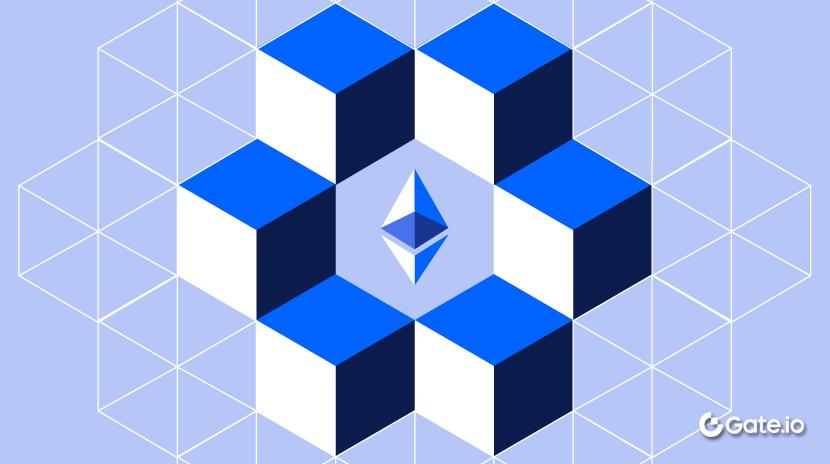
Comment miser sur l'ETH?
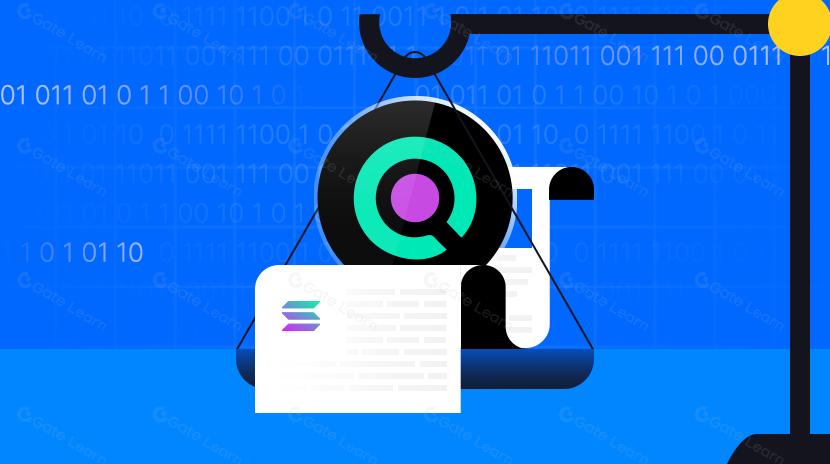
Qu'est-ce que Solscan et comment l'utiliser ? (Mise à jour 2025)
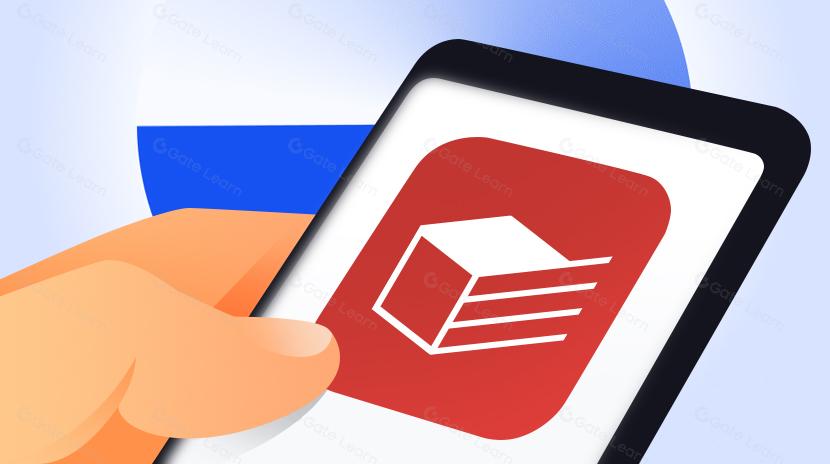
Qu'est-ce que Tronscan et comment pouvez-vous l'utiliser en 2025?
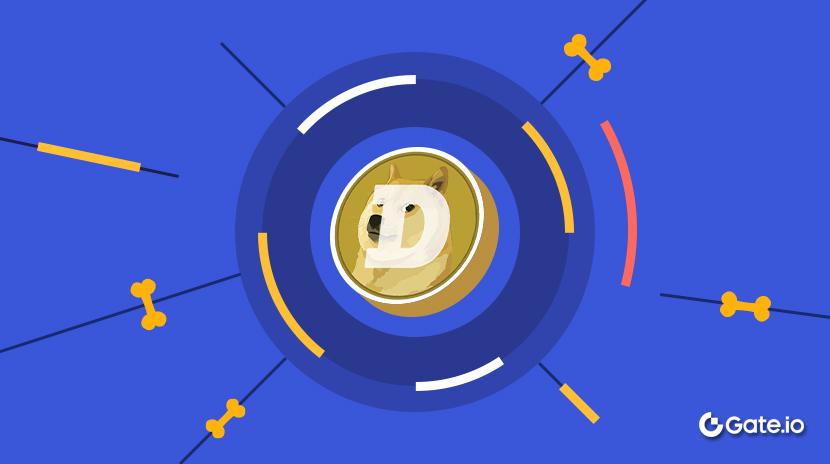
Qu'est-ce que le Dogecoin ?
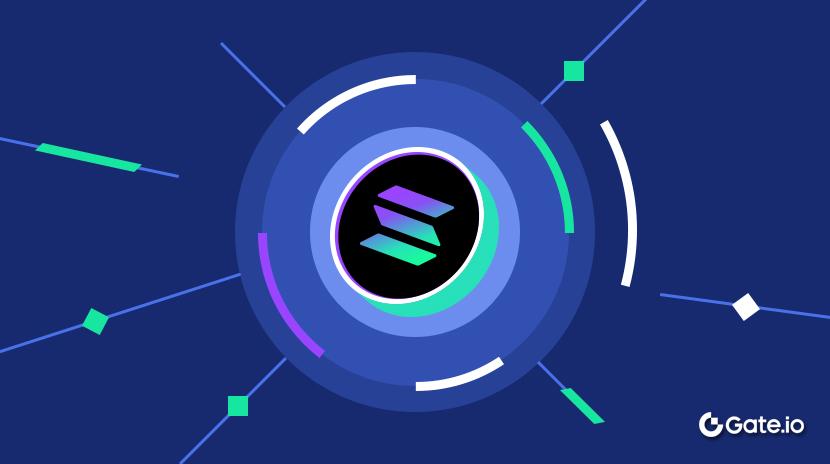
Qu'est ce que Solana?
